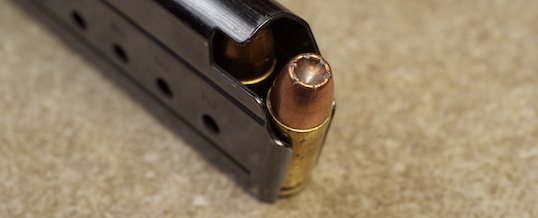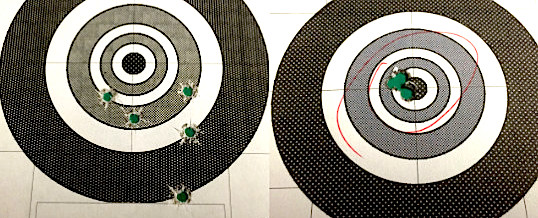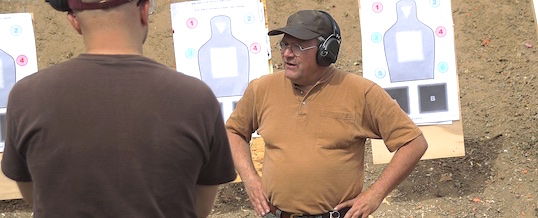
What self defense ammunition is best for the 9mm carbine?
I’ve often said that I’m in favor of the pistol-caliber carbine, either autoloading or lever action, as a home and homestead defense weapon under some circumstances. Why the carbine? Because it affords the defender some advantages over the handgun as a defensive tool without the disadvantages of going to a full-powered rifle.
First, it’s easier to shoot to any given level of precision than a handgun. The carbine’s four points of contact with the body versus the single point of contact of the handgun (even if using both hands, you still only have one point of contact) means that achieving a high level of precision at any given rate of fire requires less effort, training and practice on the part of the shooter. This is especially important if the gun is a “pool” weapon, one which will be used by more than one person in the household. You might be a highly proficient handgun shooter, but what about your spouse — or your responsible teenage children? Not many people have Jerry Miculek’s family! The lesser-trained people in your house might be better served with the carbine than with your pistol.
Second, the pistol-caliber carbine is easier to shoot to any given level of speed than a handgun. Again, those four points of contact — combined with higher mass of the gun — gives a reduced recoil impulse, which means that most people will shoot a carbine much faster (higher rate of fire) than they can a handgun. That translates to being able to put more holes into the vital areas of your attacker in a shorter period of time, which means that you’re likely to stop his attack sooner. The carbine makes it easier to do that, and again at a lower threshold of training and practice.
Third, the carbine is easier to shoot at extended distances than the handgun. For many people, making a handgun shot at even 15 or 20 yards is tough to do even before factoring in the stress that results from the body’s natural threat responses. The carbine’s four points of contact mean a steadier gun which makes those shots — and even longer ones — surer, especially for the less experienced defender.
That isn’t to say that the carbine doesn’t have some downsides, however, and my recommendation isn’t meant to be universal. If you expect to need to move through your house to gather children into a safe room, for instance, any long gun — carbine, rifle or shotgun — is the last tool to pick up. The handgun makes it much easier to maneuver and do things like open doors or pull children behind you. The long gun, including the pistol caliber carbine, is a tool best used from an ensconced (barricaded) position or from an extended range (such as dealing with attacks which occur out-of-doors.)
While carbines can be found chambered in many different pistol cartridges it’s the 9mm which is most common, and for good reason: it’s probably the most popular pistol cartridge these days, and where the pistols go the carbines follow!
Picking ammunition for your 9mm carbine
Unlike the .357 carbine, which enjoys a huge performance advantage over a handgun chambering the same ammunition, the 9mm carbine usually sees very little increase in performance over the shorter pistol barrel. The 9mm cartridge is remarkably efficient and makes the best use of its powder charge in short barrels, and if you peruse the charts over at Ballistics By The Inch you’ll find that the standard-pressure 9mm loads don’t gain much in the 16-inch-long barrel of the typical carbine. It’s the lighter bullets which see more of a velocity increase than the heavier bullets, as do the +P versions in any given bullet weight.
The issue is that the 9mm bullets have been carefully designed to expand at velocities out of a handgun and may expand to early, readily, or energetically when the velocity is increased. This can translate to inconsistent and shallow wound tracks and resulting inability to reach to the vital organs. This isn’t a sure bet, you understand, because there are a lot of variables to consider, but is a definite possibility.
The heavier bullets, such as the 147 grain loads, will see less of a velocity increase and are therefore less likely to suffer from the issue. They’re consequently more likely stay in one piece and actually perform as designed.
My primary recommendation for a 9mm carbine, then, is a 147 grain load from a major manufacturer: Speer, Winchester, or Federal. They work wonderfully out of a handgun, and with the modest velocity increase from a carbine-length barrel are not likely to fragment and experience reduced effectiveness.
If you’re deathly afraid of over-penetration (and I believe, in most cases, this fear to be overblown) picking one of the 124 grain +P loads might be a good strategy. The small but certainly measurable increase in muzzle velocity is more likely to result in early expansion and fragmentation, which usually reduces the penetration. Again, I think that the fear of over-penetration is unfounded in most cases — but if you live in an apartment where you have a neighbor in every direction, this might be a valid concern.
The pistol-caliber carbine is a viable home defense option and, despite the naysayers, offers some definite advantages in “shootability” — particularly for those who may not have your level of training and expertise. On the plus side, someone with good shooting ability and knowledge will be better able to exploit the advantages in precision and recoil control that the carbine offers. Is it the “perfect” home and homestead security tool? No, but then again nothing is!
If the carbine’s attributes fit your defensive requirements, choosing ammunition carefully will go a long way to making sure that you’re getting everything you can out of these handy little guns!
– Grant Cunningham
- Posted by Grant Cunningham
- On February 1, 2016



